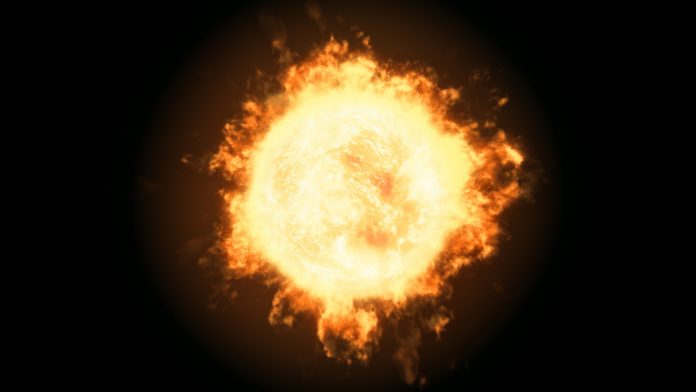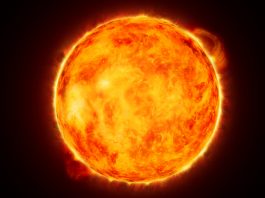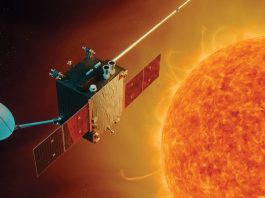University of Wisconsin-Madison physicists have created a new method of lab-based solar wind phenomena research to learn about their properties in other star systems.
Gases and plasmas cool as they expand, when our Sun expels plasma in the form of solar wind, the wind also cools as it expands through space, although this effect is a lot less severe than the laws of physics predict.
“People have been studying the solar wind since its discovery in 1959, but there are many important properties of this plasma which are still not well understood,” says Stas Boldyrev, professor of physics and lead author of the study.
Boldyrev continued: “Initially, researchers thought the solar wind has to cool down very rapidly as it expands from the sun, but satellite measurements show that as it reaches the Earth, its temperature is ten times larger than expected. So, a fundamental question is: why doesn’t it cool down?”
A fundamental dynamical phenomenon
Solar plasma is a mix of negatively charged electrons and positively charged ions. This plasma is influenced by magnetic fields that extend into space, generated beneath the solar surface.
Some electrons have a lot of energy and keep travelling for infinite distances. Those with less energy cannot escape the Sun’s positive charge and are attracted back to the Sun.
Boldyrev said: “There is a fundamental dynamical phenomenon that says that particles whose velocity is not well aligned with the magnetic field lines are not able to move into a region of a strong magnetic field.”
Such returning electrons are reflected so that they stream away from the sun, but again they cannot escape because of the attractive electric force of the sun. So, their destiny is to bounce back and forth, creating a large population of so-called trapped electrons.”
Confining plasma
To explain the temperature observations in the solar wind, scientist examined a related field of plasma physics for a possible explanation.
Plasma fusion researchers developed ‘mirror machines’, or plasma-filled magnetic field lines shaped as tubes with pinched ends, in order to confine plasma. As charged particles in the plasma travel along the field lines, they reach the bottleneck and the magnetic field lines are pinched. The pinch acts as a mirror, reflecting particles back into the machine.
“But some particles can escape, and when they do, they stream along expanding magnetic field lines outside the bottle. Because the physicists want to keep this plasma very hot, they want to figure out how the temperature of the electrons that escape the bottle declines outside this opening,” Boldyrev says. “It’s very similar to what’s happening in the solar wind that expands away from the sun.”
Dual purpose mechanism
Researchers from this new study aimed to apply the same theory from the mirror machines to the solar wind. In mirror machine studies, physicists found that the very hot electrons escaping the bottle were able to distribute their heat energy slowly to the trapped electrons.
“In the solar wind, the hot electrons stream from the sun to very large distances, losing their energy very slowly and distributing it to the trapped population.
“It turns out that our results agree very well with measurements of the temperature profile of the solar wind and they may explain why the electron temperature declines with the distance so slowly,” said Boldyrev.
The accuracy with which mirror machine theory predicts solar wind temperature opens the door for using them to study solar wind in laboratory settings.









